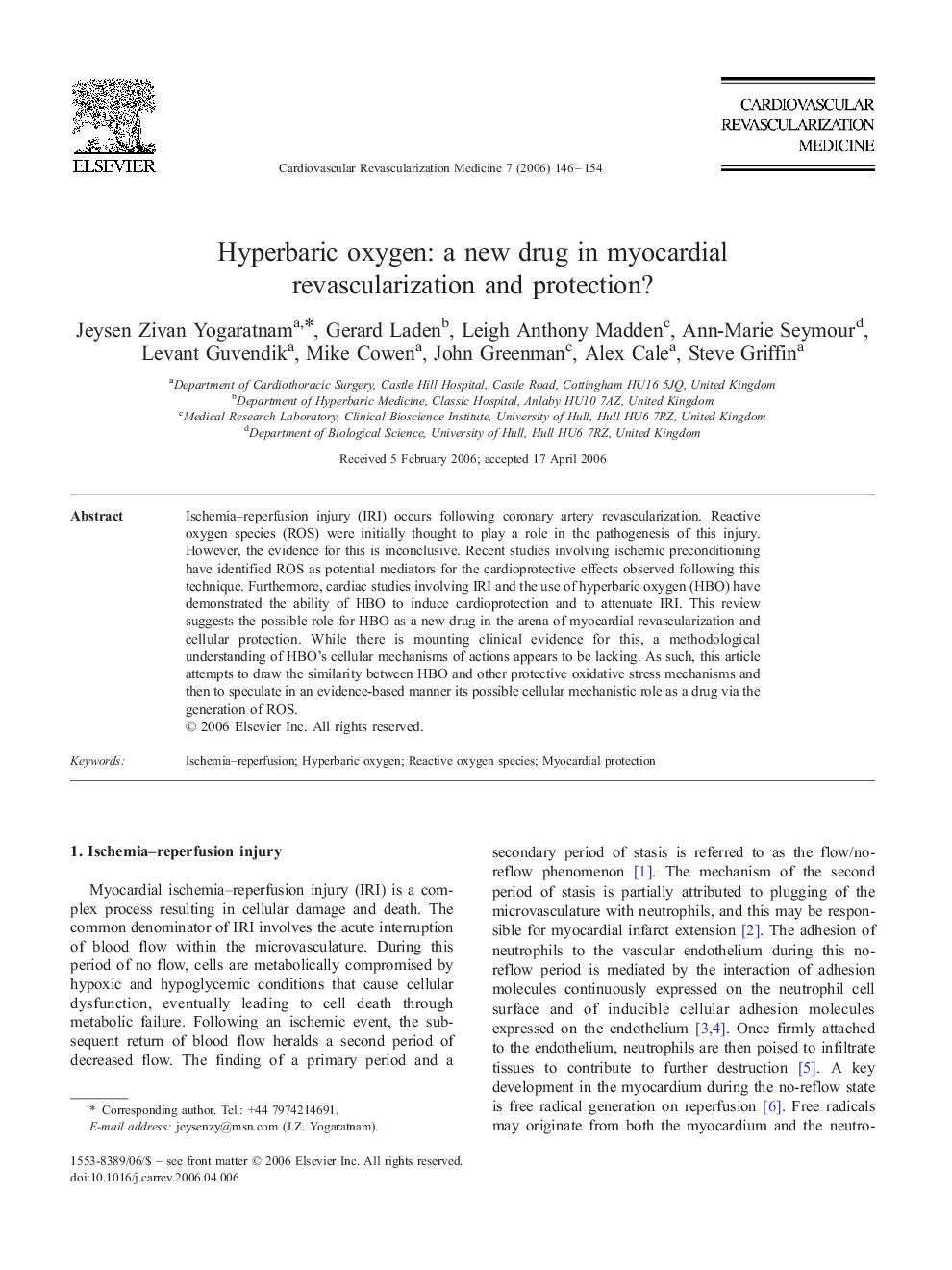| Article ID | Journal | Published Year | Pages | File Type |
|---|---|---|---|---|
| 2838243 | Cardiovascular Revascularization Medicine | 2006 | 9 Pages |
Ischemia–reperfusion injury (IRI) occurs following coronary artery revascularization. Reactive oxygen species (ROS) were initially thought to play a role in the pathogenesis of this injury. However, the evidence for this is inconclusive. Recent studies involving ischemic preconditioning have identified ROS as potential mediators for the cardioprotective effects observed following this technique. Furthermore, cardiac studies involving IRI and the use of hyperbaric oxygen (HBO) have demonstrated the ability of HBO to induce cardioprotection and to attenuate IRI. This review suggests the possible role for HBO as a new drug in the arena of myocardial revascularization and cellular protection. While there is mounting clinical evidence for this, a methodological understanding of HBO's cellular mechanisms of actions appears to be lacking. As such, this article attempts to draw the similarity between HBO and other protective oxidative stress mechanisms and then to speculate in an evidence-based manner its possible cellular mechanistic role as a drug via the generation of ROS.
